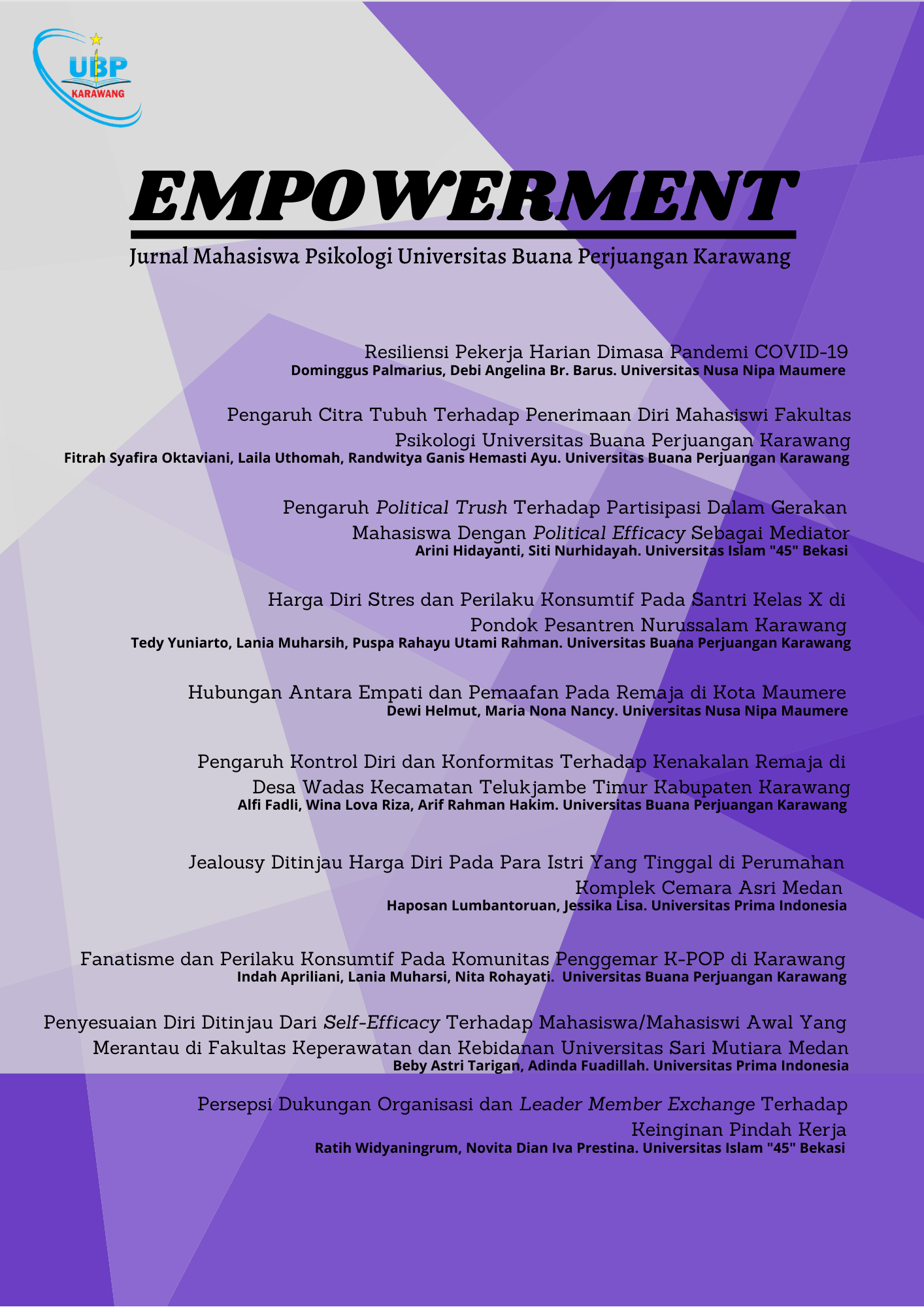HUBUNGAN ANTARA BODY SHAMING DENGAN SELF-CONFIDENCE PADA REMAJA PEREMPUAN DI SMA SWASTA KALAM KUDUS MEDAN
Abstract
Penelitian bertujuan untuk mengetahui adanya hubungan antara body
shaming dengan self-confidence pada remeja perempuan di SMA Swasta Kalam
Kudus Medan. Hipotesis dalam penelitian ini yaitu adanya hubungan negatif antara
body shaming dengan self-confidence pada remeja perempuan di SMA Swasta
Kalam Kudus Medan. Subjek penelitian yang digunakan dalam penelitian ini
berjumlah 75 remeja perempuan yang mengalami prilaku body shaming dengan
menggunakan teknik purposive sampling. Penelitian ini menggunakan metode
kuantitaif, dengan menggunakans skala body shaming 48 butir dan skala selfconfidence 48 butir. Uji asumsi yang digunakan terdiri dari uji normalitas dan uji
linerlitas. Data di analisis menggunakan uji korelasi pearson product moment
dengan SPSS versi 20.0 for Windows. Hasil analisis data menunjukkan adanya
hubungan positif antara body shaming dengan self-confidence pada remaja
perempuan di SMA Swasta Kalam Kudus Medan dengan koefisien korelasi Pearson
Correlation sebesar r = 0.772 dengan Sig sebesar 0.000 (p < 0.05). Hasil penelitian
ini menunjukkan bahwa sumbangan efektif yang di berikan variabel body shaming
terhadap self-confidence sebesar 59,6 persen dan sisanya 40,4 persen dipengaruhi
oleh faktor lain yang tidak diteliti. Dari hasil penelitian ini dapat ditarik kesimpulan
bahwa hipotesis penelitian adanya hubungan negatif antara body shaming dengan
self-confidence di tolak.
This study aims to determine the relationship between body shaming and
self-confidence in adolescent girls at the Kalam Kudus Private High School Medan.
The hypothesis in this study is that there is a negative relationship between body
shaming and self-confidence in adolescent girls at the Kalam Kudus Private High
School Medan. The research subjects used in this study amounted to 75 female
teenagers who experienced body-shaming behavior by using the purposive
sampling technique. This study uses a quantitative method, using a body-shaming
scale of 48 items and a self-confidence scale of 48 items. The assumption test used
consists of a normality test and linearity test. The data were analyzed using the
Pearson product-moment correlation test with SPSS version 20.0 for Windows. The
results of data analysis showed that there was a positive relationship between body
shaming and self-confidence in adolescent girls at the Kalam Kudus Private High
School Medan with a Pearson Correlation coefficient of r = 0.772 with a Sig of
0.000 (p < 0.05). The results of this study indicate that the effective contribution
given by the body-shaming variable to self-confidence is 59.6 percent and the
remaining 40.4 percent is influenced by other factors not examined. From the results
of this study, it can be concluded that the research hypothesis that there is a negative
relationship between body shaming and self-confidence is rejected




